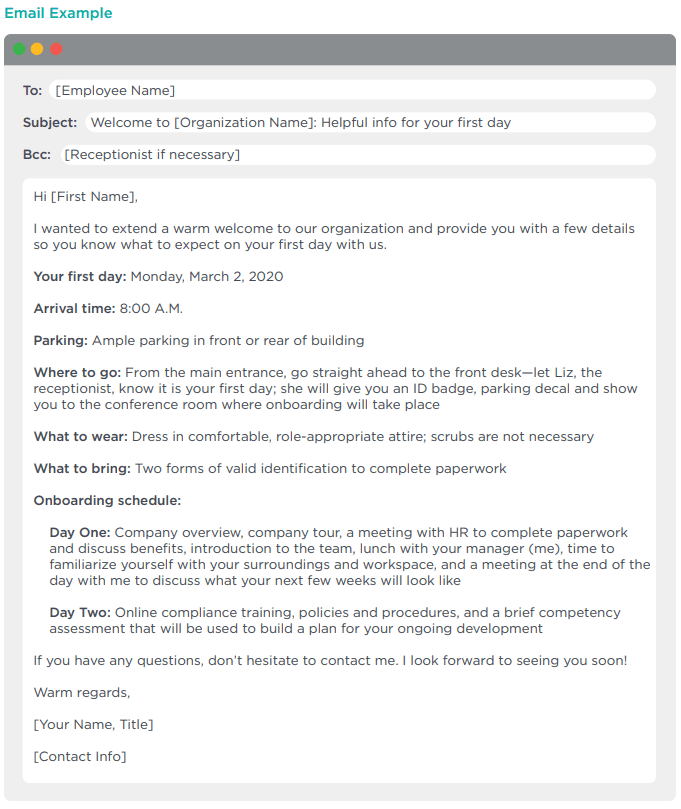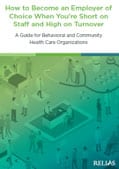After you have hired a star employee to work at your behavioral or community healthcare center, the next step is to make a great first impression on their first day of work. While that often begins during onboarding, consider opening the lines of communication before then, especially if there is a long period of time from when they accept their offer to their first day. During this interim period, called pre-boarding, you can use various communication methods to engage your new employee to get them excited for their first day and career at your organization.
What exactly is pre-boarding?
We have all heard of onboarding, but what exactly is pre-boarding? Simply put, pre-boarding engages newly hired staff between their offer acceptance and day one on the job.
Aberdeen Group’s research report, Welcome to the 21st Century, Onboarding!, shows that companies who apply pre-boarding activities are 11% more likely to retain first-year employees compared to those without pre-boarding. The report also indicates cost savings, showing that those same companies that use pre-boarding are 1.6 times more likely to have a lower cost-per-hire rate than those without pre-boarding.
Pre-boarding is also mentioned in the 2019 trends report from Training Industry, Inc., where they identify pre-boarding as an opportunity employers could leverage to demonstrate their investment in supporting job candidates.
Companies that offer pre-boarding are 11% more likely to retain first-year employees compared to those without pre-boarding and those companies that use pre-boarding are 1.6 times more likely to have a lower cost-per-hire rate than those without pre-boarding.
—Aberdeen Group
Below are ways you can implement pre-boarding at your healthcare center to improve your onboarding and retention strategy.
1. Share new hire documents before their first day
Share paperwork and forms your new employee needs to review and sign before their first day on the job. This can save onboarding time and allow them to get to work sooner. Some of these new hire documents can include:
- Direct deposit forms for automated payroll
- Tax forms
- Benefits paperwork
- Employee handbook
There are also some things that should not be shared before day one, like information that is proprietary to your healthcare center, including, of course, any items that would violate HIPAA laws. Other items that should wait to be shared during onboarding are job-specific topics or activities, for which your new employee should be paid to learn.
2. Personalize pre-boarding
A great way to connect with your newly hired employees is to incorporate informal opportunities for them to get to know and network with their peers. For example:
- If your new hire is new to the area, recommend local realtors or ask if anyone on the team is willing to act as a local ambassador
- Share an overview of your center or other publicly available information to reduce information overload in their first few days on the job
- If you have a mentorship program, introduce the mentor to your new hire along with their contact information so they can connect beforehand
- Set up a call ahead of your new hire’s start date to introduce yourself before day one (if you didn’t already meet during the interview process)
- Have your new hire participate in team or corporate events if there is a long period before they start at your center
- Send a “What to Expect on Your First Day” email to ease their first day on the job (more information on this below)
3. Alleviate first day jitters
The first day at a new job can be nerve-wracking. Try to prepare your new employee as best you can by sending them an email a couple of days before their first day to let them know what to expect, what time to arrive, what to bring, where to park, who to ask for and other important details.
The email can be templated so you and other hiring managers won’t have to recreate the wheel every time there is a new hire. Use the following first day email example as a starting off point:

For more tips on how to improve the way you pre-board, onboard and retain highly skilled behavioral and community healthcare staff, download our free guide, How to Become an Employer of Choice When You’re Short on Staff and High on Turnover. Inside, you’ll find an in-depth walkthrough of how to hire, interview, and onboard, along with helpful templates and worksheets, to improve staff engagement and retention.

Free Guide: How to Become an Employer of Choice When You’re Short on Staff and High on Turnover
The staff shortage crisis and soaring turnover rates in the healthcare industry is creating a demand for employers to re-examine the way they attract, hire, onboard and develop staff. This guide—complete with worksheets and practical tools—includes four actionable steps behavioral and community health centers can take to improve current strategies and become an employer of choice.
Download the guide →





